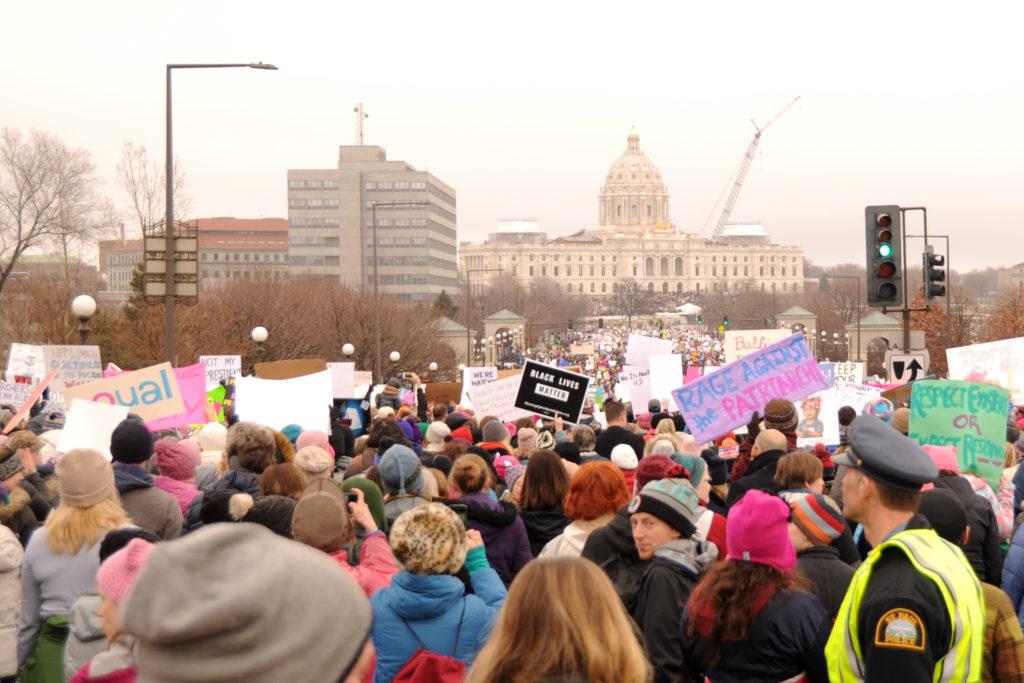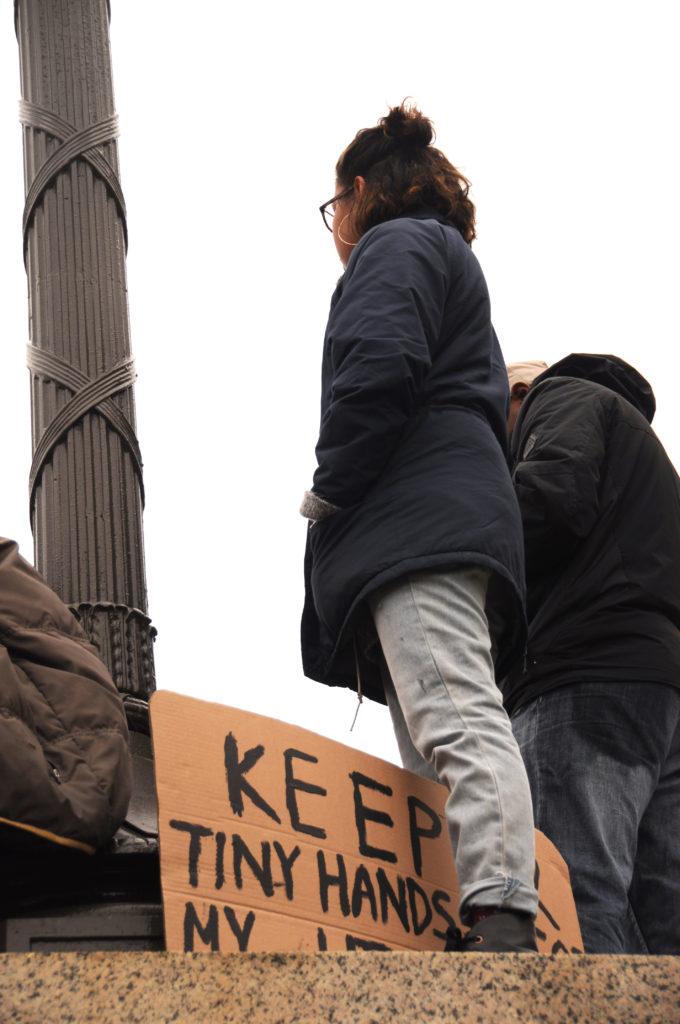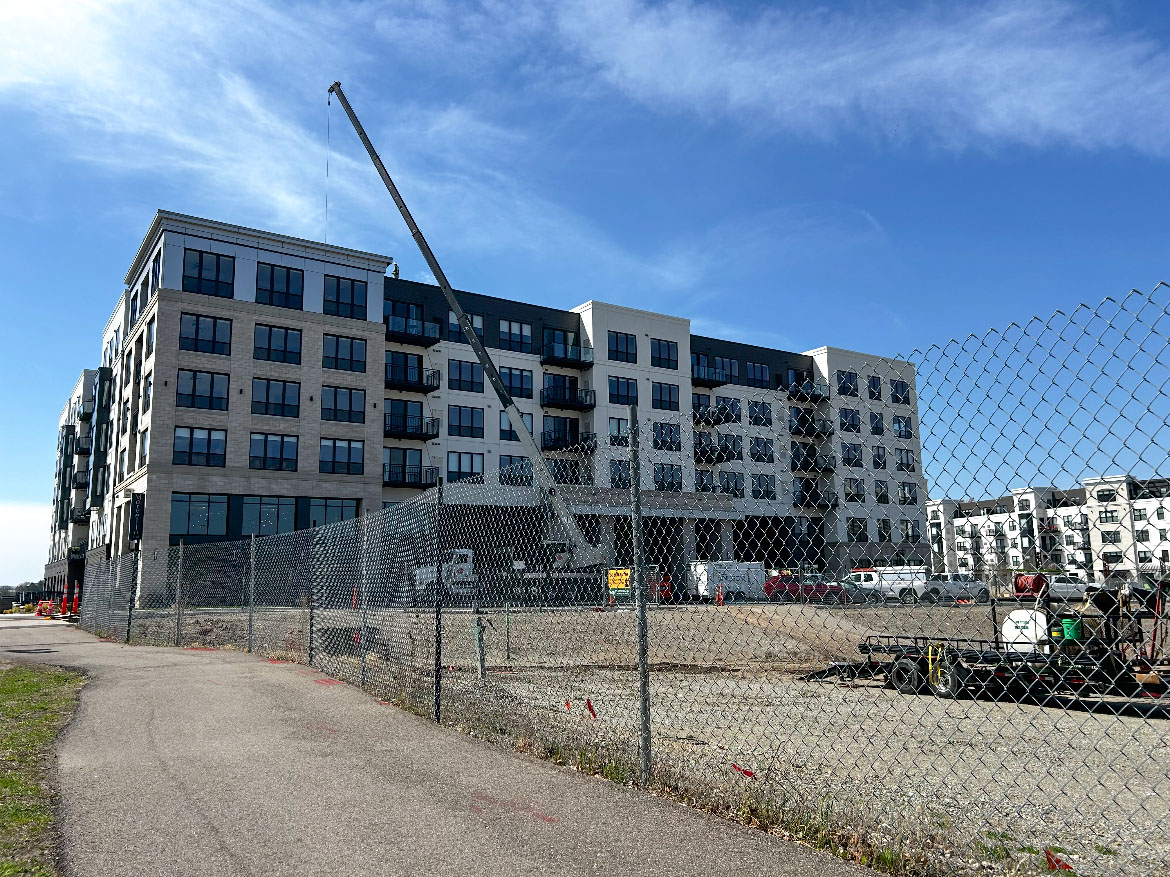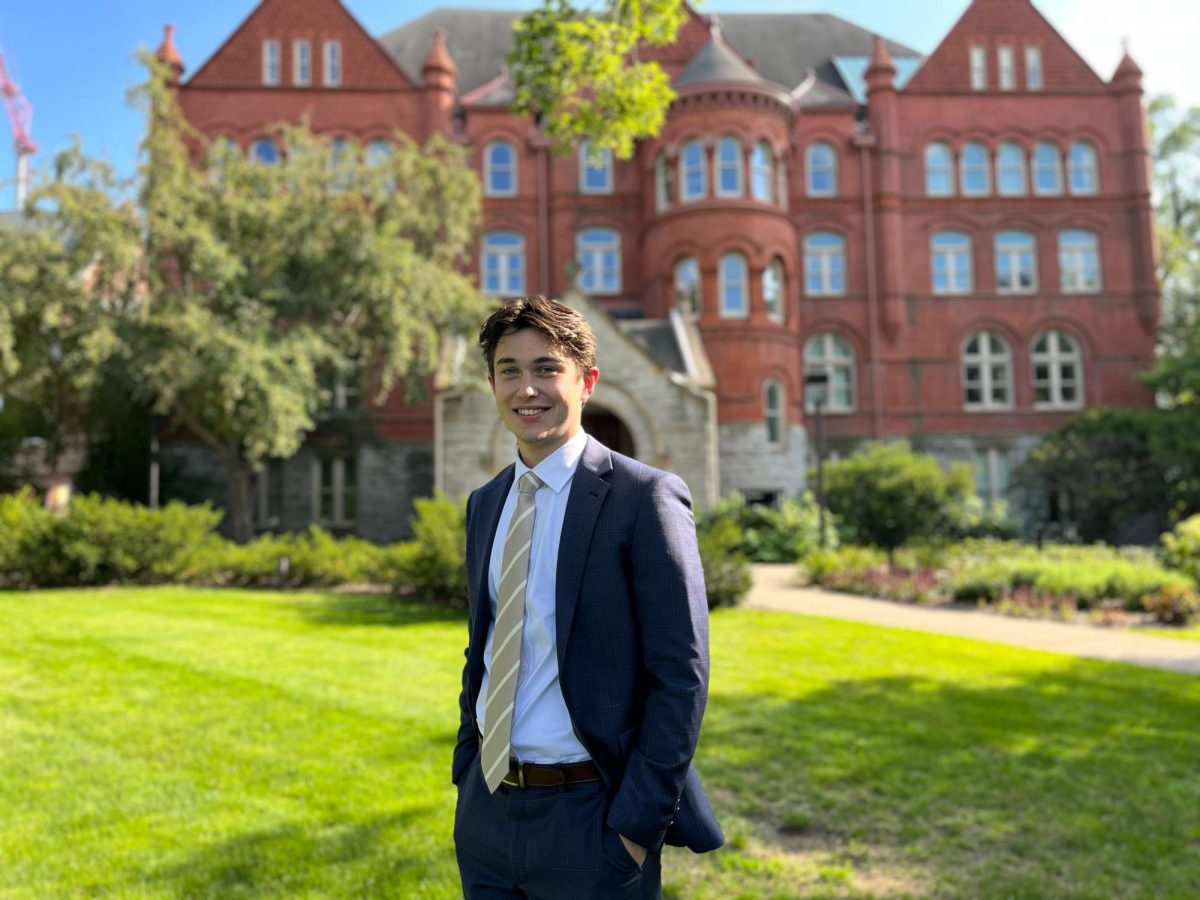St. Paul Police estimated that the crowd held between 90,000 and 100,000 people, making the St. Paul demonstration one of the nation’s 10 largest.
The excitement of the march – on a day in which more than three million people would protest Trump and advocate for equal rights across the world – was captured by a woman who, describing the event, said, “The buses are full, the trains are full, there are thousands of people on University Avenue… this is a big deal.”
Speakers at the main event included DFL gubernatorial hopeful and Macalester’s representative to the Minnesota House Erin Murphy, and Ilhan Omar, a former refugee who became the first Somali-American elected to U.S. office in November.
Amy Elkins, an English professor who joined Macalester last year from Emory College in Atlanta, said, “As a feminist scholar, I don’t even have the words to describe how devastated I am about this [administration]. I’m here to support my students, but also because I believe in women’s rights as human rights.”
With trains and buses packed full of protesters, a number of Macalester students had to find creative ways to join the march. For some, that creativity included walking the four miles from Macalester to the protest’s starting point at St. Paul College.
Kata Hahn ’20 spent two hours trying to make it to the protest. When she finally got hold of an Uber, the driver said that he “wasn’t going down there” due to traffic which, in some cases, extended for over a mile from the Capitol.
Marchers in transit to the event were met with a stream of honks and smiles from traffic. The positive spirit of the event — during which just one arrest was made of a Trump supporter who pepper sprayed marchers — extended to those who did make it onto public transportation.
A girl on the same bus pulled out bars of chocolate and offered them to a group of women holding signs and wearing pink hats.
“It was so wonderful as I was making my way down Grand Avenue to see that huge line of people at the bus stop,” said environmental science professor Roopali Phadke. “I was bumping into students and colleagues left and right down at the Capitol. It felt like we were there in earnest.”
A number of Macalester students and faculty members traveled to Washington, D.C. to be at the epicenter of the event in a crowd that D.C. Police estimated was more than one million people strong.
Dio Cramer ’20, who is from the D.C. area, made a 17-hour drive from Macalester with a friend and arrived at her house at 8:00 a.m. on the day of the march. “We got stuck in the crowd and didn’t hear any of the speakers, but it was still powerful to be around that sheer number of people,” Cramer said.
Three of the faculty members who were in Washington for the demonstration — Adrienne Christiansen, Devavani Chatterjea, and Terri Fishel — will host a lunch event Friday in the library to discuss the experiences they had there.
Coming just one day after the inauguration of a president whose election caused phenomenal amount of grief and fear around Macalester and in many of the communities where the march was so well-supported, the tone of the event was surprisingly upbeat.
“It felt kind of jubilant,” Phadke said. “I think that was unexpected, but kind of cathartic. There was kind of a sense of joyfulness, of playfulness, and I thought that was an important antidote for a lot of people coming off of the week prior.”
The question, Phadke said, is what happens from here. “Now that some of Trump’s promises are coming through, I’m curious about what happens next,” she said. “Will 50,000 people show up for a Standing Rock protest? To block the Keystone XL pipeline?”
“It remains to be seen. A seminal moment in American history is underway.”








Warren McGrath • Sep 11, 2019 at 10:24 am
Never knew this, appreciate it for letting me know.
Ruth Mills • Sep 10, 2019 at 5:04 am
We’re a gaggle of volunteers and opening a new scheme in our community. Your web site offered us with valuable information to work on. You’ve performed an impressive process and our entire neighborhood can be grateful to you.
Virginia Cameron • Sep 4, 2019 at 10:15 pm
I found your weblog web site on google and examine a couple of of your early posts. Proceed to keep up the superb operate. I simply further up your RSS feed to my MSN News Reader. Looking for ahead to reading extra from you afterward!…
LongwoodGarden Pizza • Jul 30, 2019 at 3:22 pm
So content to obtain discovered my suggest.. certainly, investigation is paying off. Enjoy the website you furnished.. Beneficial opinions you may have here..
NativeDeodorantcoupons • Jul 30, 2019 at 9:26 am
Yeah, nice posting but In the initial step. You said promote in order to people that you have mentioned inside your posting.
PeterPiperPizzapromo • Jul 30, 2019 at 5:05 am
Thanks for posting the very brilliant post. You defined the hyperlink building methods incredibly.
Sky Zone Coupons • Jul 29, 2019 at 7:30 pm
Comes with anyone obtained any true success from HARO? It merely seems that the majority of of the reporters mounted on the organization are usually from america which terribly lack much objectives from other nations specifically in South Asia. Brian, can you direct myself to the full scenario research? Thanks.
Noomcoupons • Jul 29, 2019 at 2:05 pm
Thanks for discussing the brilliant post. The hyperlink was explained by you building strategies amazingly.
Chewy coupon • Jul 29, 2019 at 10:54 am
Yes, nice post but In as well as. You claimed promote in order to individuals you have discussed within your articles.
Stockx Coupons • Jul 29, 2019 at 8:44 am
Carries anyone got any genuine success from HARO? It only feels that a lot of of the reporters mounted on the organization can be from the US which do not possess much targets from other places particularly in South Asia. Brian, is it possible to principal me personally to any situation research? Thanks.
freeprints promocodes • Jul 29, 2019 at 6:51 am
Thanks for revealing the particular brilliant post. You explained the hyperlink developing methods incredibly.